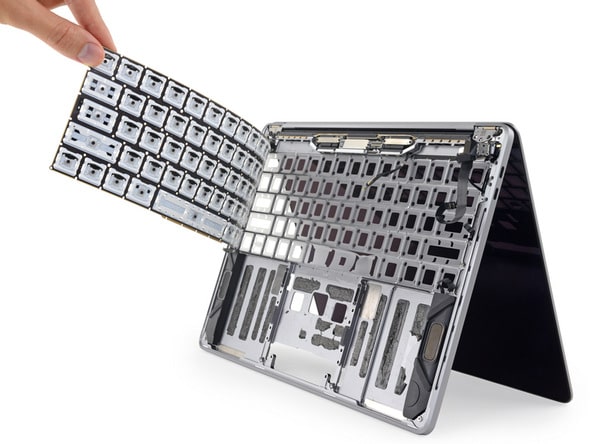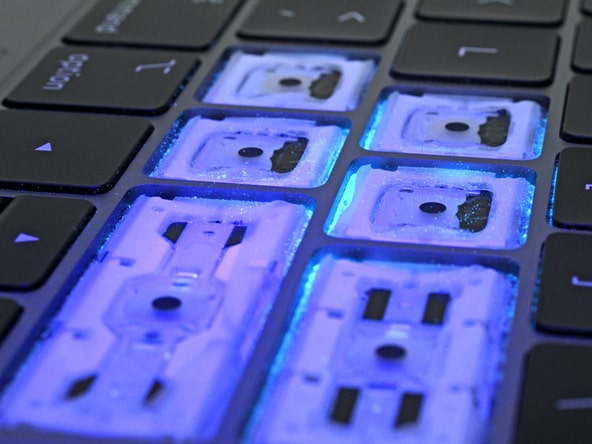
Earlier this month, Apple launched a new 13- and 15-inch MacBook Pro with Touch Bar, and also introduced a third-generation butterfly keyboard.
At the time, Apple said that the new keyboard wasn’t designed to address any of the issues that have cropped up over the years, since the launch of the first-generation butterfly keyboard in the 12-inch MacBook back in 2015. Which eventually led to a repair program for those keyboards as well. However, the machines earned the teardown treatment after their launch and it was discovered that there is a “thin, silicone barrier” beneath the keycaps, which could help reduce dust and other small debris from messing anything up.
Apple’s own internal documentation has revealed that the membrane beneath the keycaps is indeed designed to help reduce the amount of dust and other small particles from getting under the keys and causing issues. And now iFixit has put together an in-depth look at the third-generation keyboard in the newest MacBook Pro models, confirming that the membrane does indeed help. But it’s not a 100% fix.

The publication compared the 2017 MacBook Pro keyboard and the 2018 MacBook Pro keyboards and determined that the small addition of the membrane beneath the keycaps does indeed help. That silicone coverage is able to prevent a large amount of dust and small particles from finding a way deeper into the keyboard, which can potentially lead to sticking keys, and keys that don’t register a keypress at all.
However, there is a hole in the membrane so that the keycap can connect, which means that it is still possible for dust and other particles to get into the keyboard. When the publication put that to the test, putting dust into the “danger zones” of the keyboard, they determined that it is indeed still possible for the third-generation keyboard to break down in a similar fashion to the second-gen keyboard.
However, that membrane does seem to do a good job of keeping particles and dust out of the keyboard. It is certainly possible that, over time, the third-gen keyboard can fall victim to similar issues as the first- and second-gen keyboards, though. This may be a small fix, but it appears to help quite a bit for now.
The publication also determined that Apple has made it easier to remove the spacebar on the third-gen butterfly keyboard, making it possible to remove it without breaking it.
You can check out the full third-generation butterfly keyboard teardown through the source link below.
[via iFixit]